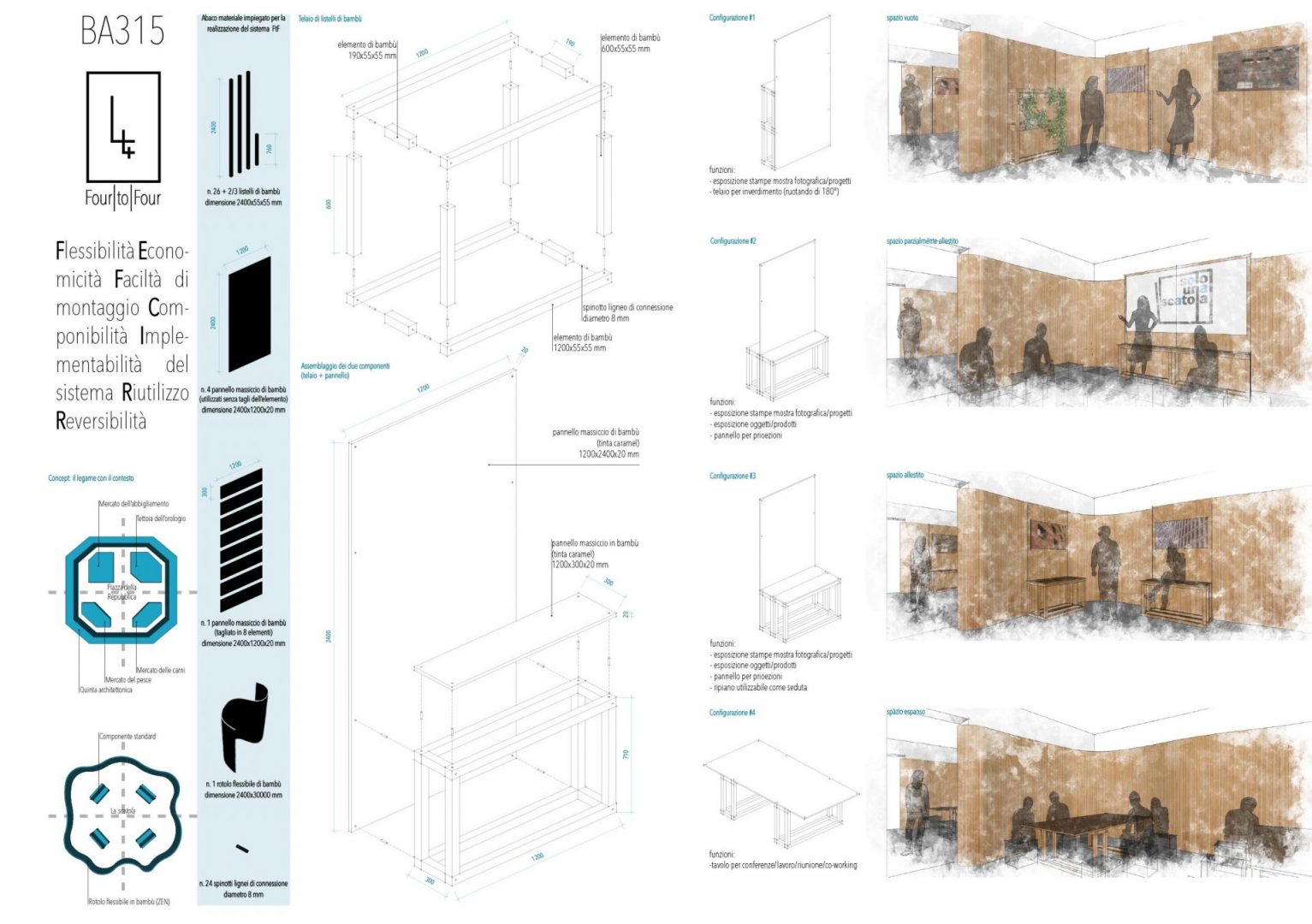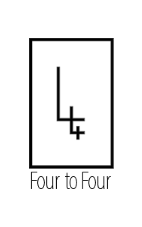Four to four. Four combinations for four functions.
Four to Four (hereinafter FtF) conceptually born by combining the space of “our box” (the space of 25 square meters) in Piazza della Repubblica, in which it is possible to recognize four distinct poles, intended for the markets covered meat , fish, clothing and mixed. These elements, albeit with a different nature (with respect to the type of merchandise that is sold within them), establish a dialogue between them both from the visual point of view and from the point of view of the relationship between full and empty space, between public and private space , between the surfaces and volumes.

Starting from 'spatial articulation that characterizes the Republic Square and by the need to refer to a generic environment of 5x5 meters, has developed a project that took shape in a completely autonomous from the same space. Therefore, it was considered necessary to reason about a standard autonomous element, which on one side was able to organize the space and the other was provided with a certain level of flexibility to be able to respond to different needs. As well as the buildings that surround Piazza della Repubblica form a scenic backdrop for the Porta Palazzo market, the same way the ZEN roll integrates with the standard item appearing as a soft linear element able to relate and tie the individual modules to space that hosts them giving fluidity, giving unity to the construction project as a whole. The standard element is constituted by three components able to easily join between them: the solid bamboo panel (120x240x2 cm) and two box frames realizzatiassemblando elements of three different lengths (19 cm - 60 cm - 120 cm), derived from the joists a square section of side 5.5 cm glued together by means of wooden plugs. The ZEN roll (2,04x30 m), however, is an element that is integrated with the standard element by inserting it between the panel and the frame. Based on the concepts of flexibility, constructive simplicity and cheapness, FtF develops inside the box assuming four different possible configurations depending on the function or event that the same environment must accommodate and spatial organization that they require, namely: - Empty (temporary exhibition, vernissage, leisure) - Partially occupying (debate projection) - Laid (artist's workshop, temporary studio, freelancer) - Expanded (coworking) Regardless of activity reference and therefore the configuration adopted (exhibitor, compact wall, table, etc.), FtF allows its use both in one of just 25 square meters is available when the environment is extended or in outdoor areas (where present) due to its complete autonomy with respect to the structure design of the environments and the distribution box. It is independent of each other, and from the box, it was thought to provide the space with four FtF; obviously the number of necessary elements is to be decided depending, of course, the box and the needs to which they are intended. After use, FtF may be efficient for various uses since it is composed of elements that can be resized and combined with each other at will.





